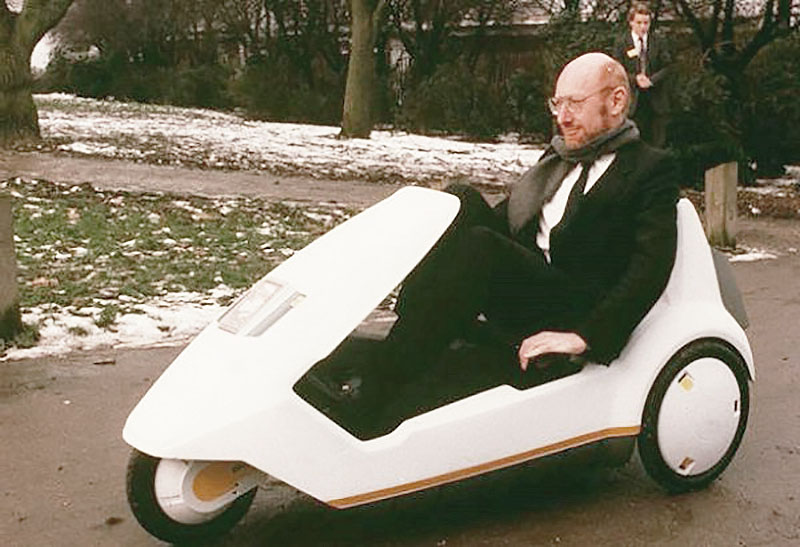The Sinclair C5 was a three-wheeled electric tricycle that was launched in 1985 by Sir Clive Sinclair, a British entrepreneur known for his home computers. Sir Clive Sinclair’s vision for the Sinclair C5 was to create an affordable and accessible form of electric transportation. The C5 was designed to be a practical vehicle for short commutes and errands. It was unique in that it did not require a license or helmet to operate, making it appealing to a wider range of users.
The Sinclair C5 had a lightweight plastic shell and a small electric motor powered by sealed lead-acid batteries. The rider sat in a recumbent position, pedaling to assist the motor on hills or when the battery was depleted. The C5’s design was unconventional and somewhat fragile. Some argued that it was too radical for the time, and riders were exposed to the elements.
- The Sinclair C5 weighed 30kg and the battery (a 12V 36ah item) weighed 15kg. This means half the weight of the vehicle came from the battery itself.
- It had a range of 20 miles on a single charge. This limited the practicality of the vehicle for longer trips.
- The electric motor was originally envisaged for a truck cooling fan. This highlights the use of unconventional components to create a low-cost electric vehicle.
Despite its innovative design, the Sinclair C5 was not a commercial success. Production delays and higher-than-expected manufacturing costs led to a higher price tag than originally anticipated. This positioned the C5 as a niche product and limited its appeal to budget-conscious consumers. Additionally, the C5’s practicality was questioned. Its small wheels and low ground clearance made it unsuitable for rough roads or uneven terrain. The recumbent riding position was unfamiliar to many users and not considered comfortable for longer journeys.
The Sinclair C5 is often seen as a ahead of its time. While it was not commercially successful in the 1980s, the concept of a lightweight, electric vehicle resonates strongly today. The Sinclair C5’s influence can be seen in modern electric scooters and pod-like vehicles designed for short-distance urban transportation.

Leave a Reply